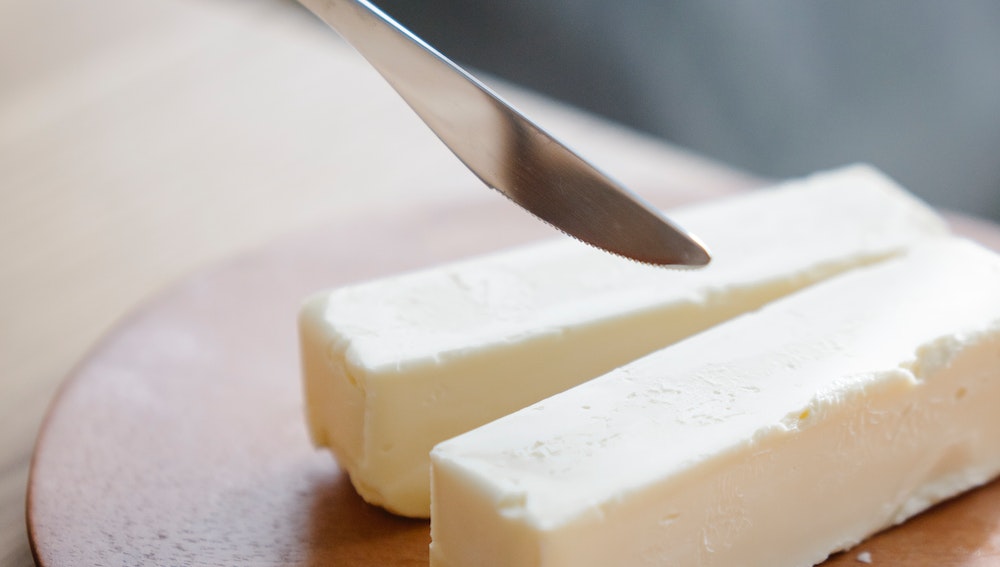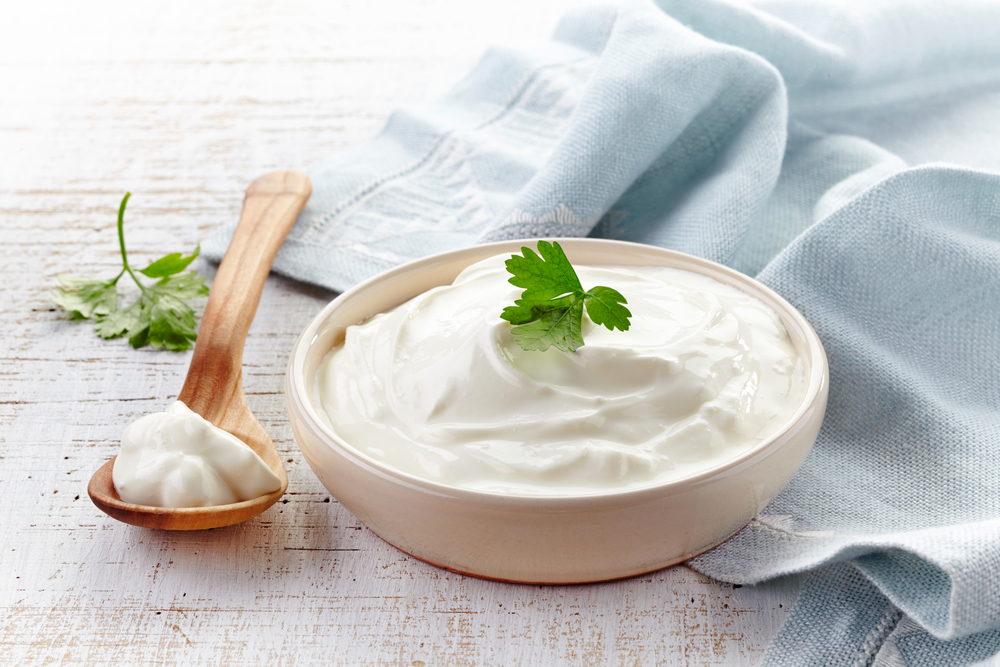The quality of butter can greatly affect the taste and texture of our favorite recipes. Understanding what bad butter tastes like can help us avoid using it in our culinary creations and potentially save our dishes.
Sometimes, it can be challenging to determine whether a stick of butter has become rancid, but gaining a better understanding can be beneficial for our taste buds and the delectability of our meals.
There are a few common characteristics of bad butter, such as changes in color, smell, and texture. The taste itself might become bitter, sour, or even metallic.
By being able to identify these undesirable traits, we will be better prepared to spot rancid butter before we mistakenly add it to our recipes, keeping our dishes flavorful and fresh.
Key Takeaways
- Bad butter can have a bitter, sour, or metallic taste
- Identifying characteristics of rancid butter includes changes in color, smell, and texture
- Proper storage and management of butter can prevent spoilage and ensure freshness
Understanding Bad Butter

The Nature of Butter
Butter is a dairy product primarily derived from the fat content of milk or cream. It consists of approximately 80% fat, while the remaining content is a mixture of milk solids and water.
The beneficial fat content in butter includes saturated fats, which are essential for healthy cell function in the body. Butter’s quality is influenced by the milk source, processing methods, and storage conditions.
Defining ‘Bad’ Butter
Bad butter, or rancid butter, refers to butter that has gone bad due to the breakdown of its fat content. This deterioration usually results from exposure to air, light, or heat, causing the fats to turn rancid.
Rancid butter develops an unpleasant odor and taste, affecting the overall quality and nutrition of the butter.
There are several factors that can contribute to the breakdown of butter’s fat content:
- Temperature: Storing butter at room temperature or above can accelerate the process of fat oxidation, leading to rancidity.
- Air exposure: The presence of oxygen in the air can speed up the oxidation process, causing butter to spoil faster.
- Light exposure: Direct exposure to sunlight or artificial light can create chemical reactions in the fats, leading to rancid butter.
Once butter has turned rancid, it should not be consumed as it might cause digestive discomfort and food spoilage.
Proper storage methods, such as keeping butter refrigerated and using airtight containers, can help prolong the shelf life and maintain the quality of the butter.
Characteristics of Bad Butter
Changes in Taste
Bad butter typically has a noticeably different taste than fresh butter. The taste can be described as stale, bitter, or even slightly sour.
This change in taste occurs due to the oxidation process and the breakdown of fats in the butter. As the butter becomes rancid, the taste will become increasingly unpleasant.
Changes in Texture
Changes in texture can also be a sign of bad butter. Fresh butter is usually smooth and creamy, while rancid butter may become grainy or oily.
This change is due to the separation of the fat and moisture content in the butter. Over time, the texture degradation may also lead to the formation of small clumps or lumps.
Changes in Color
As butter ages or turns bad, its color may change. Fresh butter is usually pale yellow, while bad butter may appear more yellowish or even have a slightly grayish tint.
This change in color can be subtle, so it’s essential to consider other factors, such as taste, texture, and smell, when evaluating butter.
Changes in Smell
The smell of butter is a strong indicator of its quality. Fresh butter has a pleasant, creamy aroma, while bad butter often develops a rancid smell.
This unpleasant odor is easily recognizable and might resemble old, stale oil. Once butter starts emitting a rancid smell, it’s a clear sign that it has gone bad and should not be consumed.
The Effects of Bad Butter

Health Implications
Consuming bad butter can lead to several health issues. When butter turns rancid, it becomes a breeding ground for harmful bacteria.
These bacteria can cause gastrointestinal problems like food poisoning and diarrhea. It is important to be cautious when using dairy products, especially when it comes to adding butter to baked goods, such as bread, cookies, and cakes.
Flavor Impact on Dishes
The taste of bad butter has a negative impact on various dishes, including sauces and biscuits. When butter goes bad, it develops an unpleasant odor and a bitter taste.
This off-flavor can significantly ruin the taste of the dishes it is used in. Ultimately, using bad butter in your recipes, whether they are dairy products or baked goods, will affect not only the taste but also the aroma and overall enjoyment of the dish.
Causes of Spoilage in Butter
Butter, a dairy product made by churning milk or cream, has a limited shelf life. The factors contributing to spoilage in butter include bacterial growth, mold, and improper storage.
Bacteria are responsible for deterioration in the quality and flavor of butter. When butter is exposed to air, the bacteria present in the atmosphere can multiply rapidly, causing spoilage.
Some common bacteria found in spoiled butter are Salmonella, Clostridium, and Staphylococcus. These bacteria can cause the butter to become rancid and develop an unpleasant taste and odor.
Mold is another factor that can contribute to butter spoilage. Mold spores are present in the environment, and when they find a suitable growing medium, such as butter, they can grow and spread.
Visible mold colonies in butter are a clear sign of spoilage and should not be consumed.
The process of bacterial growth and mold formation can be accelerated when butter is not stored properly. Butter can easily absorb odors and flavors from its surroundings, impacting the taste and leading to spoilage. Therefore, it is essential to store butter properly.
- Storage Temperature: Maintaining the right temperature is crucial to preserving the quality of butter. Keeping butter at room temperature for a short period is acceptable. However, long-term storage requires refrigeration to slow down bacterial growth and mold formation.
- Air and Light Exposure: Minimizing air and light exposure helps prevent spoilage. It is best to keep butter wrapped in its original packaging or an airtight container.
- Cross-contamination: Ensure that the butter is not exposed to other contaminated foods, and always use clean utensils for handling.
Generally, unopened butter has a shelf life of several weeks to a few months when stored properly. However, once opened, butter should be consumed within one to two weeks to avoid spoilage.
It is essential to check for signs of spoilage, such as changes in smell, texture, and taste before consuming butter.
Storage and Management of Butter

Refrigerated Butter
Storing butter in the refrigerator is the most common way to maintain its freshness and taste. Keep butter in an airtight container in a area with minimal temperature fluctuations.
The ideal storage temperature for butter is between 33°F and 40°F (0.5°C to 4.4°C). This will help prevent the butter from absorbing any odors or tastes from other food items stored in the fridge.
Butter at Room Temperature
It is also acceptable to store butter at room temperature for a short period of time, provided it’s placed in a butter dish with a cover or an airtight container on a countertop.
Room temperature butter spreads more easily, which can be helpful when preparing meals. Be sure the room temperature does not exceed 70°F (21°C), as warmer temperatures can cause the butter to spoil more quickly.
For added protection, use a butter bell or crock, which creates a water seal to preserve the butter’s quality.
Frozen Butter
Freezing butter is an excellent option for long-term storage. It can be stored in the freezer for up to one year without compromising its taste or texture. To freeze butter, wrap it tightly in plastic wrap, followed by a layer of aluminum foil or place it in an airtight container.
This will protect the butter from freezer burn and prevent it from absorbing odors or tastes from other items in the freezer. When ready to use, simply transfer the frozen butter to the refrigerator to thaw for a few hours.
Quality Alternatives to Bad Butter
When searching for better alternatives to bad tasting butter, several options cater to various preferences and dietary requirements. It is important to choose high-quality products that not only taste great but also provide health benefits.
Salted butter is a popular choice due to its rich flavor, with the added salt acting as a natural preservative. Opting for a brand with less salt content, like grass-fed varieties, can enhance taste and offer healthier attributes.
Unsalted butter is another superior alternative, providing a creamy and natural taste without added salt. This allows for control over the sodium content of dishes or baked goods while retaining moisture.
Whipped butter offers a lighter texture, which spreads effortlessly on toast or bread. Whipped butter contains less fat and fewer calories than regular butter and is often incorporated with air or water. Look for options with limited additives and high-quality ingredients.
For those avoiding dairy, margarine is a plant-based substitute. When selecting a margarine, search for products with reduced trans fats, and opt for olive or avocado oil-based varieties to improve taste and nutritional value.
Coconut oil is a versatile alternative, offering health benefits and a unique flavor profile. With a high smoke point and plant-based saturated fats, it is a suitable choice for cooking, baking, and even for spreading on toast. Choose extra virgin, unrefined coconut oil for best quality.
Lastly, for a zesty twist, lemon butter provides a unique taste suitable for baked goods, seafood, or as a condiment. Combining unsalted butter with lemon zest and juice adds a tangy, refreshing kick to any dish.
By considering these quality alternatives to bad butter, consumers can enjoy a range of flavors and textures, while prioritizing taste and healthy choices.
Tips to Ensure Freshness
To keep butter fresh and maintain its quality, there are several factors to consider. The first step is to store butter properly.
Keeping it in an airtight container and refrigerating it between 32-38°F will help prevent moisture and the growth of bacteria. Ensure the butter stays away from strong-smelling foods, as it can absorb odors from other items.
Another key aspect is to check the expiration date when buying butter. This provides an estimate of the butter’s freshness, but it’s essential to trust your senses when doing a taste test.
If the butter smells off, it might be old or expired and should not be consumed.
Yogurt is often used as a reference for the taste of fresh butter. If the butter tastes similar to yogurt, it is likely still fresh. On the other hand, if the butter tastes sour or distinctly different from yogurt, it’s possibly expired and unsafe to consume.
Paying attention to the moisture content in butter is also crucial. Fresh butter should have a firm consistency and should not be watery or slippery. If the butter is too soft and appears to have more moisture than usual, it’s likely not fresh.
Lastly, considering the pasteurization process can provide insights into the freshness of butter. Pasteurized butter usually lasts longer as the process eliminates bacteria, while unpasteurized butter has a shorter shelf life. Buying pasteurized butter when possible will result in fresher, longer-lasting butter.
By following these tips, you can ensure the freshness and quality of your butter, ultimately enhancing your culinary experiences and the flavors of your meals.
How to Repurpose Butter on the Verge of Going Bad
When butter is nearing its expiration date or has developed a slightly off taste, it’s still possible to give it new life in various recipes.
By incorporating it into dishes where the taste will blend well with other ingredients, you can avoid wasting this dairy product.
Baked goods are an excellent choice to repurpose bad butter. Since the taste of the butter is tempered by the other flavors in the recipe, it’s hardly detectable in the final product.
Using it in cookies, biscuits, and cakes is a practical solution, as these items often require butter for flavor and texture.
Bread can also benefit from the inclusion of bad butter. In recipes such as garlic bread or flavored toast, the butter is mixed with aromatic herbs and spices, masking any off-taste. The heat from toasting the bread also helps to mellow out the butter’s flavor.
Incorporating less-than-fresh butter into dairy products is another viable option. Whipping it into homemade ice cream allows the other ingredients, like sugar or chocolate, to cover up any off flavors. Use it in ice cream preparation or as a topping for milkshakes, both of which incorporate other strong flavors to help mask the taste.
It’s essential to be cautious when repurposing butter on the verge of going bad. Taste it beforehand to determine whether its flavor is still acceptable to use in recipes.
If the butter has gone rancid or developed mold, it is not safe for consumption and should be discarded.
By following these suggestions, it’s possible to prevent waste and get the most out of every stick of butter – even ones that have seen better days.
Remember that the key is to mix the butter with other flavorful ingredients in order to salvage its usefulness in the kitchen.
Conclusion
Bad butter has a distinct taste that is hard to ignore. It is often described as sour, bitter, or rancid. This unpleasant taste results from the butter becoming spoiled due to improper storage, contamination, or simply reaching its expiration date.
Those who frequently cook or bake are well-acquainted with the importance of using high-quality and fresh butter. Using spoiled butter not only affects the taste but may also pose potential health risks, such as food poisoning.
To avoid the pitfalls of bad butter, it is crucial to store it properly. This entails refrigerating it and keeping it sealed in an airtight container.
Additionally, abiding by its “best by” date is essential to ensure its optimal taste and safety.
In summary, recognizing the taste of bad butter is important for both culinary success and overall health. Proper storage and attention to expiration dates can prevent the unpleasant experience of encountering rancid butter altogether.
Frequently Asked Questions
What are the signs of spoiled butter?
Spoiled butter may exhibit signs such as discoloration (changing from yellow to light tan or gray), a rancid or sour smell, mold development, or an off taste. Additionally, the butter might feel sticky or greasy when touched.
Can rancid butter cause illness?
Consuming rancid butter may cause minor digestive issues, such as an upset stomach or diarrhea, but it is not typically considered dangerous or toxic. However, it is always better to avoid ingesting spoiled food to minimize health risks.
Is there a way to detect bad butter without tasting?
Yes, detecting bad butter can be done by examining its appearance, texture, and smell. Look for changes in color (e.g., a tan or gray hue), mold growth, or oily patches. If the butter smells off, sour, or stale, it may be spoiled.
Why might butter have a soapy taste?
Butter may have a soapy taste if it has been exposed to soap, detergents, or other chemicals. This can happen during the butter-making process or through cross-contamination in the kitchen.
To avoid this issue, ensure all equipment is thoroughly cleaned and store butter away from strong-smelling substances.
Is butter with a cheesy smell still safe?
A slightly cheesy smell might indicate that the butter is beginning to turn rancid. While it may not be harmful if consumed in small quantities, it is best to discard the butter and use a fresh product for optimal taste and food safety.
Are there any uses for rancid butter?
While rancid butter is not suitable for consumption, it can be repurposed for other uses, such as lubricating door hinges, making candles, or creating homemade soap.
Be cautious when handling rancid butter and avoid contact with skin or ingestion.







